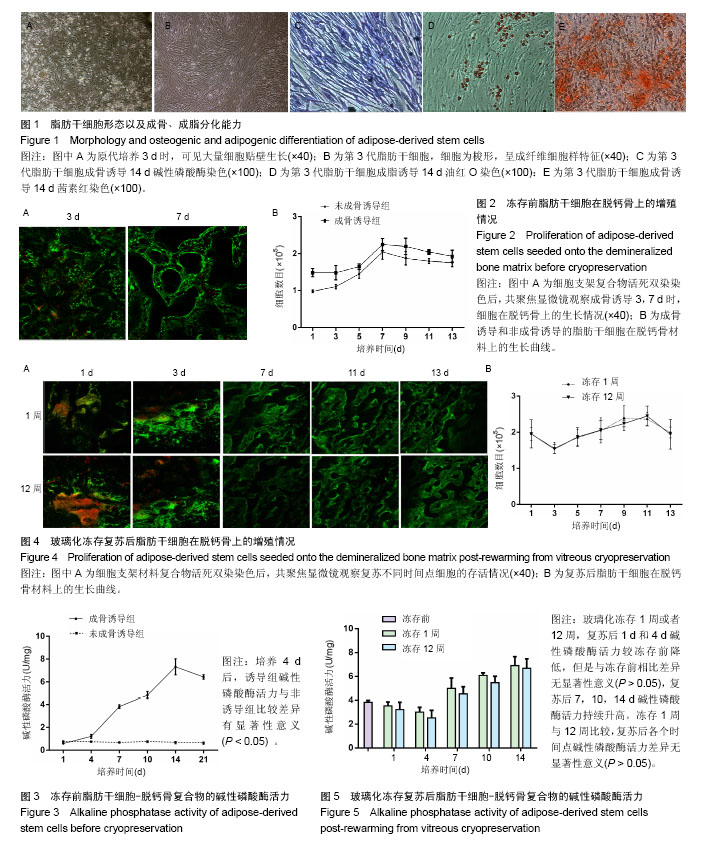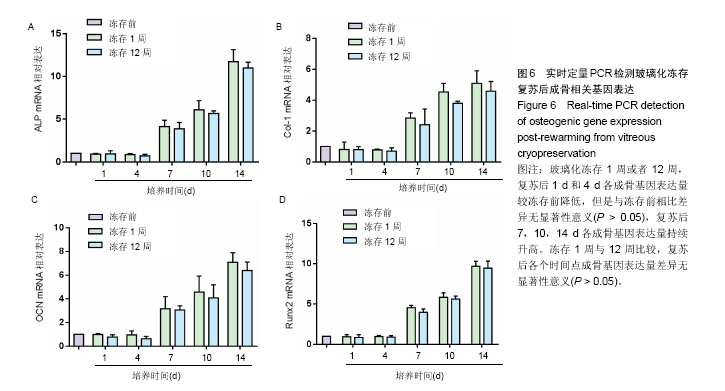| [1] Sundararaj GD, Amritanand R, Venkatesh K, et al. The use of titanium mesh cages in the reconstruction of anterior column defects in active spinal infections: can we rest the crest. Asian Spine J. 2011;5(3): 155-161.[2] Sahoo NG, Pan YZ, Li L, et al. Nanocomposites for bone tissue regeneration. Nanomedicine (Lond). 2013;8(4):639-653.[3] Blokhuis TJ, Arts JJ. Bioactive and osteoinductive bone graft substitutes: definitions, facts and myths. Injury. 2011;42 Suppl 2:S26-29.[4] Zimmermann G, Moghaddam A. Allograft bone matrix versus synthetic bone graft substitutes. Injury. 2011;42 Suppl 2:S16-21.[5] Strioga M, Viswanathan S, Darinskas A, et al. Same or not the same? Comparison of adipose tissue-derived versus bone marrow-derived mesenchymal stem and stromal cells. Stem Cells Dev. 2012;21(14): 2724-2752.[6] Zuk PA, Zhu M, Ashjian P, et al. Human adipose tissue is a source of multipotent stem cells. Mol Biol Cell. 2002;13(12):4279-4295.[7] Dimarino AM, Caplan AI, Bonfield TL. Mesenchymal stem cells in tissue repair. Front Immunol. 2013;4:201.[8] Obata A, Kasuga T. Stimulation of human mesenchymal stem cells and osteoblasts activities in vitro on silicon-releasable scaffolds. J Biomed Mater Res A. 2009;91(1):11-17.[9] Sheykhhasan M, Qomi RT, Ghiasi M. Fibrin Scaffolds Designing in order to Human Adipose-derived Mesenchymal Stem Cells Differentiation to Chondrocytes in the Presence of TGF-β3. Int J Stem Cells. 2015;8(2):219-227.[10] Sheykhhasan M, Qomi RT, Kalhor N, et al. Evaluation of the ability of natural and synthetic scaffolds in providing an appropriate environment for growth and chondrogenic differentiation of adipose-derived mesenchymal stem cells. Indian J Orthop. 2015;49(5):561-568.[11] Wu L, Cai X, Zhang S, et al. Regeneration of articular cartilage by adipose tissue derived mesenchymal stem cells: perspectives from stem cell biology and molecular medicine. J Cell Physiol. 2013;228(5):938-944.[12] Filardo G, Madry H, Jelic M, et al. Mesenchymal stem cells for the treatment of cartilage lesions: from preclinical findings to clinical application in orthopaedics. Knee Surg Sports Traumatol Arthrosc. 2013;21(8):1717-1729.[13] Holt DJ, Grainger DW. Demineralized bone matrix as a vehicle for delivering endogenous and exogenous therapeutics in bone repair. Adv Drug Deliv Rev. 2012;64(12):1123-1128.[14] Pabaney AH, Reinard KA, Asmaro K, et al. Novel technique for cranial reconstruction following retrosigmoid craniectomy using demineralized bone matrix. Clin Neurol Neurosurg. 2015;136:66-70.[15] Schwartz Z, Hyzy SL, Moore MA, et al. Osteoinductivity of demineralized bone matrix is independent of donor bisphosphonate use. J Bone Joint Surg Am. 2011;93(24):2278-2286.[16] Mandawala AA, Harvey SC, Roy TK, et al. Cryopreservation of animal oocytes and embryos: Current progress and future prospects. Theriogenology. 2016;86(7):1637-1644.[17] Yong KW, Wan Safwani WK, Xu F, et al. Cryopreservation of Human Mesenchymal Stem Cells for Clinical Applications: Current Methods and Challenges. Biopreserv Biobank. 2015;13(4):231-239.[18] Rall WF, Fahy GM. Ice-free cryopreservation of mouse embryos at -196 degrees C by vitrification. Nature. 1985;313(6003):573-575.[19] Slichter SJ, Jones M, Ransom J, et al. Review of in vivo studies of dimethyl sulfoxide cryopreserved platelets. Transfus Med Rev. 2014; 28(4):212-225. [20] Yong KW, Pingguan-Murphy B, Xu F, et al. Phenotypic and functional characterization of long-term cryopreserved human adipose-derived stem cells. Sci Rep. 2015;5:9596.[21] Miyagi-Shiohira C, Kurima K, Kobayashi N, et al. Cryopreservation of Adipose-Derived Mesenchymal Stem Cells. Cell Med. 2015;8(1-2):3-7.[22] Schulz M, Risopatrón J, Matus G, et al. Trehalose sustains a higher post-thaw sperm motility than sucrose in vitrified human sperm. Andrologia. 2017;49(9). doi: 10.1111/and.12757. Epub 2017 May 25.[23] Zhang Z, Wang T, Hao Y, et al. Effects of trehalose vitrification and artificial oocyte activation on the development competence of human immature oocytes. Cryobiology. 2017;74:43-49.[24] 邢琼,王田娟,章志国,等.海藻糖应用于人类成熟卵母细胞玻璃化冷冻研究[J].安徽医药,2013,17(12):2134-2137.[25] Matsuo K, Takahashi T, Igarashi H, et al. Effects of different trehalose concentrations in a warming medium on embryo survival and clinical outcomes in vitrified human embryos. Gynecol Obstet Invest. 2013; 76(4):214-220.[26] 符雪,王凌峰,陈吉,等. 海藻糖在低温保存组织中的应用研究现状[J].中国医疗前沿,2013,8(14):12-13.[27] Chen F, Zhang W, Wu W, et al. Cryopreservation of tissue-engineered epithelial sheets in trehalose. Biomaterials. 2011;32(33):8426-8435.[28] Yin H, Cui L, Liu G, et al. Vitreous cryopreservation of tissue engineered bone composed of bone marrow mesenchymal stem cells and partially demineralized bone matrix. Cryobiology. 2009;59(2):180-187.[29] 庸奇.脂肪干细胞-脱钙骨复合物玻璃化冻存的初步研究[D].乌鲁木齐:新疆医科大学,2014.[30] Drosse I, Volkmer E, Capanna R, et al. Tissue engineering for bone defect healing: an update on a multi-component approach. Injury. 2008;39 Suppl 2:S9-20.[31] Kofron MD, Opsitnick NC, Attawia MA, et al. Cryopreservation of tissue engineered constructs for bone. J Orthop Res. 2003;21(6):1005-1010.[32] Liu BL, McGrath JJ. Vitrification Solutions for the Cryopreservation of Tissue-Engineered Bone. Cell Preservation Technology. 2002; 2(2): 133-143.[33] Loutradi KE, Kolibianakis EM, Venetis CA, et al. Cryopreservation of human embryos by vitrification or slow freezing: a systematic review and meta-analysis. Fertil Steril. 2008;90(1):186-193.[34] James AW, Levi B, Nelson ER, et al. Deleterious effects of freezing on osteogenic differentiation of human adipose-derived stromal cells in vitro and in vivo. Stem Cells Dev. 2011;20(3):427-439.[35] Elder E, Chen Z, Ensley A, et al. Enhanced tissue strength in cryopreserved, collagen-based blood vessel constructs. Transplant Proc. 2005;37(10):4625-4629.[36] Song YC, Chen ZZ, Mukherjee N, et al. Vitrification of tissue engineered pancreatic substitute. Transplant Proc. 2005;37(1):253-255.[37] Song YC, An YH, Kang QK, et al. Vitreous preservation of articular cartilage grafts. J Invest Surg. 2004;17(2):65-70.[38] Kuleshova LL, Gouk SS, Hutmacher DW. Vitrification as a prospect for cryopreservation of tissue-engineered constructs. Biomaterials. 2007; 28(9):1585-1596. |
.jpg)


.jpg)